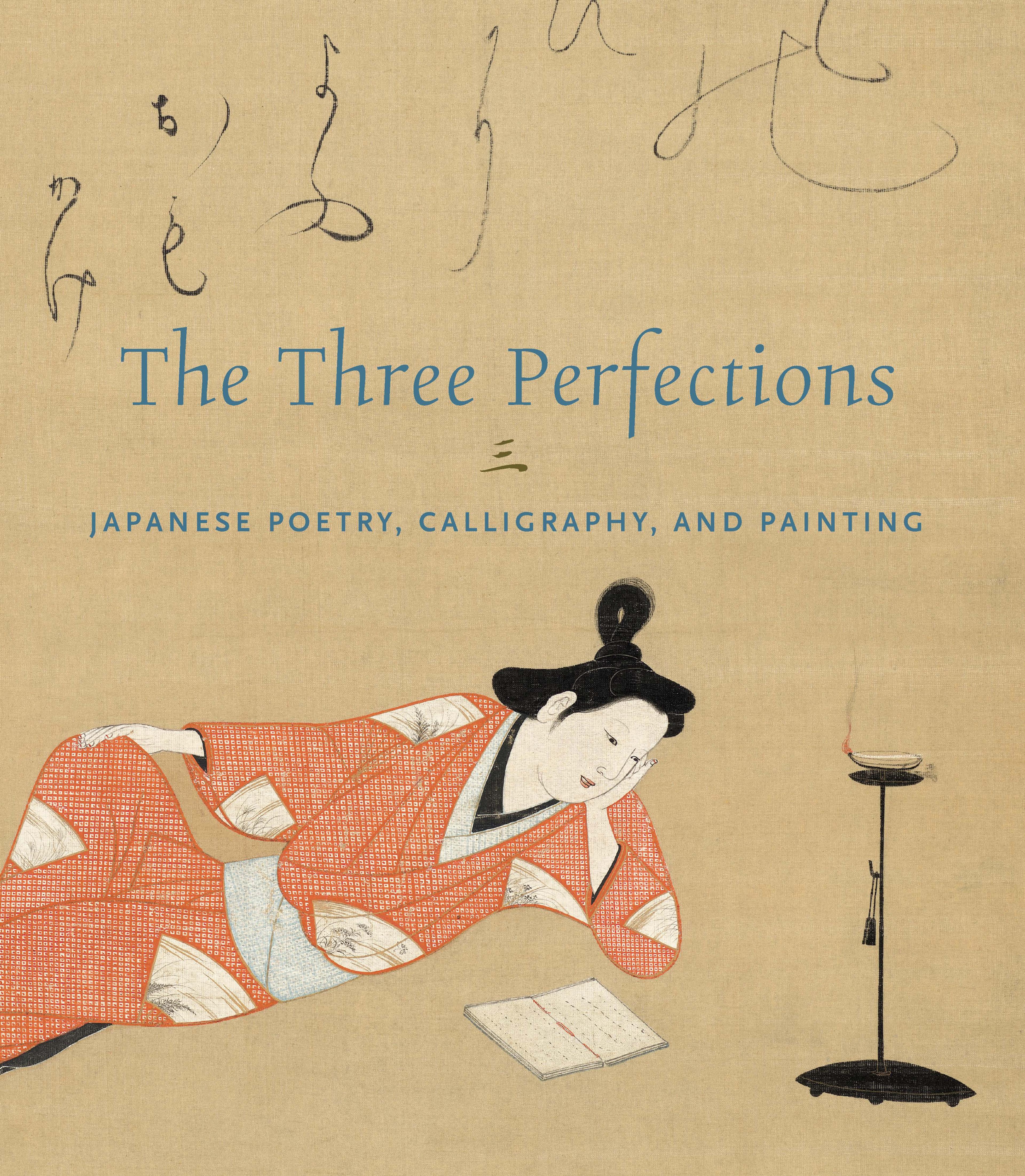Portrait of Minamoto no Muneyuki, from the “Fujifusa Version of the Handscroll of Thirty-Six Poetic Immortals”
Court artists presented imaginary portraits of venerated poets alongside representative verses from their bodies of work. Shown here in traditional court robes is Minamoto no Muneyuki (died ca. 939), a courtier of the Heian period who is counted among the Thirty-Six Poetic Immortals—a roster of celebrated poets created in the early eleventh century. The name of the poet and a biographical note are written in kanji (at far right), while the waka appears in three vertical lines of kana. The latter reads:
やま里は ふゆぞさひしさ まさりける
人ぬもくさも かれぬと思へば
In this mountain village,
it’s winter when
my loneliness deepens,
and visits from friends
and grasses both dry up.
—Trans. John T. Carpenter
やま里は ふゆぞさひしさ まさりける
人ぬもくさも かれぬと思へば
In this mountain village,
it’s winter when
my loneliness deepens,
and visits from friends
and grasses both dry up.
—Trans. John T. Carpenter
Artwork Details
- 源宗于像 藤房本 三十六歌仙絵巻断簡
- Title:Portrait of Minamoto no Muneyuki, from the “Fujifusa Version of the Handscroll of Thirty-Six Poetic Immortals”
- Artist:Inscription traditionally attributed to Emperor Godaigo (Japanese, 1288–1339)
- Period:Muromachi period (1392–1573)
- Date:early 15th century
- Culture:Japan
- Medium:Hanging scroll; ink and color on paper
- Dimensions:Image: 9 1/4 × 16 1/16 in. (23.5 × 40.8 cm)
Overall with mounting: 42 1/8 × 22 7/16 in. (107 × 57 cm) - Classification:Paintings
- Credit Line:Mary and Cheney Cowles Collection, Gift of Mary and Cheney Cowles, 2019
- Object Number:2019.420.4
- Curatorial Department: Asian Art
More Artwork
Research Resources
The Met provides unparalleled resources for research and welcomes an international community of students and scholars. The Met's Open Access API is where creators and researchers can connect to the The Met collection. Open Access data and public domain images are available for unrestricted commercial and noncommercial use without permission or fee.
To request images under copyright and other restrictions, please use this Image Request form.
Feedback
We continue to research and examine historical and cultural context for objects in The Met collection. If you have comments or questions about this object record, please contact us using the form below. The Museum looks forward to receiving your comments.
